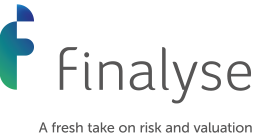Written by Sean Burke, Senior Consultant and reviewed by Francis Furey, Principal Consultant.
Introduction
In September 2021, the European Commission (EC) published a comprehensive review of the Solvency II directive, based on extensive work conducted by EIOPA. The proposed amendments were provided to the European Parliament for their consideration and approval.
The European Parliament's Committee on Economic and Monetary Affairs (Econ) has recently approved many of the amendments to the EU's Solvency II rules and the new directive on recovery and resolution of insurers. These changes are poised to reshape the regulatory landscape for insurers operating within the European Union.
After more than a year of deliberation, Econ members voted on various compromises and amendments, resulting in a majority approval of the Solvency II proposals. An implementation date for the amended directive of January 1st, 2026, has been proposed by Econ.
Key Amendments
Freeing Up Capital
Econ’s proposals have the objective of liberating billions of euros in regulatory capital for investment in the EU. This is to be achieved by reforms to the risk margin and the long-term guarantee package. While some concerns have been raised about the potential misuse of freed-up capital, the committee has proposed that insurers should prioritize directing such capital towards productive investments in the real economy.
Risk Margin
The cost-of-capital method is used to calculate the risk margin under the SII directive. Previously set at 6%, the EC proposed a value of 5% for the cost-of-capital. However, Econ has reduced it further to 4.5%.
The proposed “lambda” approach for the risk margin calculation has been endorsed by Econ. This accounts for the time-dependency of risks and should reduce the volatility of the risk margin.
Climate Change Scenario Analysis
The amendments emphasize the importance of addressing climate change and other environmental risks. Insurers are required to perform climate change scenario analysis at least every 3 years, with the results to be disclosed in the solvency and financial condition report (SFCR). The committee further urged the evaluation of insurers' exposure to biodiversity-related risks, underlining the growing significance of ESG (environmental, social, and governance) considerations.
Transition Plans
An important addition introduced by Econ is the requirement for insurers to develop plans for transitioning to net-zero greenhouse gas emissions by 2050. These plans must include quantifiable targets and processes to monitor and manage risks associated with the transition. The move aligns with the broader sustainability goals outlined in the Corporate Sustainability Reporting Directive and reflects the growing emphasis on sustainable practices within the financial sector.
SFCR
The amendments address governance and reporting requirements. The solvency and financial condition reports have been enhanced to include information on sustainability risks, climate scenario analysis results, and transition plans. These changes underscore the increasing importance of transparency and accountability in relation to environmental and social factors.
The SFCR should be split into two parts, one for the general public and another for the policyholders. The policyholder section should include a description of the business performance, capital management, and risk profile of the insurer.
Proportionality
Econ has largely adopted the Commission’s proposals for creating “low-risk undertakings,” although the criteria for identifying such firms have been adjusted slightly. These undertakings will be subject to fewer and simpler regulatory demands.
Gender Balance
Econ has passed a motion that will require insurers to set quantitative objectives to improve gender balance within their governance structures. These changes demonstrate a commitment to fairness and inclusivity within the industry.
Conclusion
While these amendments are seen as a step forward in aligning the insurance industry with broader EU sustainability goals, reactions from the various stakeholders vary. Industry lobby group Insurance Europe expressed both approval and disappointment, noting improvements in areas such as capital and volatility but also lamenting the dilution of some ambitious proposals. Environmental NGOs expressed concern that the amendments do not go far enough in incentivizing sustainable practices.
The approved amendments are now set to enter negotiations with the European Commission and Council. As these discussions resume in September after the summer break, the final shape of the regulatory framework for insurers in the EU will become clearer.
How can Finalyse help?
Finalyse has extensive experience in Actuarial and Risk management for insurance companies and can help you make sense of the Solvency II amendments, including:
• Gap Analysis: Perform a gap analysis detailing your situation against regulatory requirements and published proposals.
• Roadmap: Develop a roadmap for the integration of proposed changes into your business.
• Workshops: Conduct workshops with the objective of upskilling the relevant stakeholders within your business on the EC recommendations.
• Strategic Support: Understand the SII proposals for your business, including the long-term business strategy.
Finalyse InsuranceFinalyse offers specialized consulting for insurance and pension sectors, focusing on risk management, actuarial modeling, and regulatory compliance. Their services include Solvency II support, IFRS 17 implementation, and climate risk assessments, ensuring robust frameworks and regulatory alignment for institutions. |

Our Insurance Services
Check out Finalyse Insurance services list that could help your business.
Our Insurance Leaders
Get to know the people behind our services, feel free to ask them any questions.
Client Cases
Read Finalyse client cases regarding our insurance service offer.
Insurance blog articles
Read Finalyse blog articles regarding our insurance service offer.
Trending Services
BMA Regulations
Designed to meet regulatory and strategic requirements of the Actuarial and Risk department
Solvency II
Designed to meet regulatory and strategic requirements of the Actuarial and Risk department.
Outsourced Function Services
Designed to provide cost-efficient and independent assurance to insurance and reinsurance undertakings
Finalyse BankingFinalyse leverages 35+ years of banking expertise to guide you through regulatory challenges with tailored risk solutions. |

Trending Services
AI Fairness Assessment
Designed to help your Risk Management (Validation/AI Team) department in complying with EU AI Act regulatory requirements
CRR3 Validation Toolkit
A tool for banks to validate the implementation of RWA calculations and be better prepared for CRR3 in 2025
FRTB
In 2025, FRTB will become the European norm for Pillar I market risk. Enhanced reporting requirements will also kick in at the start of the year. Are you on track?
Finalyse ValuationValuing complex products is both costly and demanding, requiring quality data, advanced models, and expert support. Finalyse Valuation Services are tailored to client needs, ensuring transparency and ongoing collaboration. Our experts analyse and reconcile counterparty prices to explain and document any differences. |

Trending Services
Independent valuation of OTC and structured products
Helping clients to reconcile price disputes
Value at Risk (VaR) Calculation Service
Save time reviewing the reports instead of producing them yourself
EMIR and SFTR Reporting Services
Helping institutions to cope with reporting-related requirements
Finalyse PublicationsDiscover Finalyse writings, written for you by our experienced consultants, read whitepapers, our RegBrief and blog articles to stay ahead of the trends in the Banking, Insurance and Managed Services world |

Blog
Finalyse’s take on risk-mitigation techniques and the regulatory requirements that they address
Regulatory Brief
A regularly updated catalogue of key financial policy changes, focusing on risk management, reporting, governance, accounting, and trading
Materials
Read Finalyse whitepapers and research materials on trending subjects
Latest Blog Articles
Contents of a Recovery Plan: What European Insurers Can Learn From the Irish Experience (Part 2 of 2)
Contents of a Recovery Plan: What European Insurers Can Learn From the Irish Experience (Part 1 of 2)
Rethinking 'Risk-Free': Managing the Hidden Risks in Long- and Short-Term Insurance Liabilities
About FinalyseOur aim is to support our clients incorporating changes and innovations in valuation, risk and compliance. We share the ambition to contribute to a sustainable and resilient financial system. Facing these extraordinary challenges is what drives us every day. |

Finalyse CareersUnlock your potential with Finalyse: as risk management pioneers with over 35 years of experience, we provide advisory services and empower clients in making informed decisions. Our mission is to support them in adapting to changes and innovations, contributing to a sustainable and resilient financial system. |

Our Team
Get to know our diverse and multicultural teams, committed to bring new ideas
Why Finalyse
We combine growing fintech expertise, ownership, and a passion for tailored solutions to make a real impact
Career Path
Discover our three business lines and the expert teams delivering smart, reliable support


